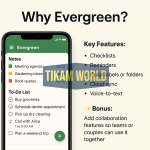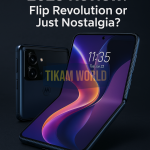5G vs 6G: What’s Coming Next in Mobile Connectivity?

The world of mobile connectivity is evolving at breakneck speed, with 5G already transforming how we communicate, work, and play. But the horizon holds something even more revolutionary: 6G. While 5G delivers blazing-fast speeds and low latency, 6G promises to redefine connectivity with ultra-high speeds, holographic communication, and seamless integration with AI and IoT. This article dives deep into the battle of 5G vs 6G, exploring their differences, potential, and what’s coming next in mobile connectivity. Get ready for an engaging, unique, and comprehensive look at the future of wireless technology!
Understanding 5G: The Current Connectivity Powerhouse
5G, the fifth generation of mobile networks, has been rolling out globally since 2019, offering significant improvements over its predecessor, 4G. It’s the backbone of modern smart cities, autonomous vehicles, and immersive technologies.
Key Features of 5G
- Speed: Up to 10 Gbps, 100 times faster than 4G.
- Low Latency: As low as 1 millisecond, enabling real-time applications like gaming and remote surgery.
- High Capacity: Supports millions of devices per square kilometer, perfect for IoT ecosystems.
- Energy Efficiency: Optimized for battery-powered devices like smart sensors.
According to Ericsson’s Mobility Report, 5G subscriptions reached 1.5 billion globally by 2024, with coverage expanding rapidly. 5G powers innovations like augmented reality (AR), smart factories, and connected vehicles, but it’s just the beginning.
5G in Action
- Healthcare: Remote surgeries using 5G’s low latency.
- Entertainment: Seamless 4K/8K streaming and cloud gaming.
- Industry 4.0: Real-time monitoring in smart manufacturing.
Despite its advancements, 5G has limitations, such as high infrastructure costs and uneven global coverage, setting the stage for 6G to take over.
What Is 6G? The Next Frontier of Connectivity
6G, the sixth generation of mobile networks, is still in its research phase but is expected to launch commercially around 2030. It aims to push the boundaries of connectivity, integrating advanced technologies like AI, quantum communication, and terahertz (THz) frequencies.
Defining Features of 6G
- Ultra-High Speeds: Up to 1 Tbps (1,000 Gbps), 100 times faster than 5G.
- Near-Zero Latency: Sub-millisecond latency, enabling instantaneous communication.
- Holographic Communication: Support for 3D holographic calls and immersive virtual environments.
- AI Integration: Native AI for network optimization and intelligent applications.
- Terahertz Frequencies: Higher frequency bands for massive data capacity.
Research from Nokia Bell Labs suggests 6G will create a “digital twin” of the physical world, enabling seamless interaction between humans, machines, and environments. While 5G connects devices, 6G will connect intelligence.
5G vs 6G: A Head-to-Head Comparison
To understand what’s coming next, let’s compare 5G and 6G across key metrics:
| Feature | 5G | 6G |
|---|---|---|
| Speed | Up to 10 Gbps | Up to 1 Tbps |
| Latency | 1–10 ms | <1 ms |
| Frequency Bands | Sub-6 GHz, mmWave (24–40 GHz) | Terahertz (100 GHz–3 THz) |
| Device Capacity | Millions per km² | Billions per km² |
| Key Applications | IoT, AR/VR, autonomous vehicles | Holography, digital twins, AI-driven networks |
| Energy Efficiency | Improved over 4G | Ultra-efficient, sustainable |
| Commercial Rollout | 2019–2025 | 2030 (expected) |
Key Takeaways
- Speed and Latency: 6G’s terahertz frequencies and AI-driven optimization will dwarf 5G’s performance.
- Applications: While 5G supports IoT and AR, 6G will enable futuristic use cases like holographic telepresence.
- Scalability: 6G’s massive device capacity will power hyper-connected smart cities.
How 5G Is Shaping Today’s World
Before diving into 6G’s potential, let’s explore how 5G is already revolutionizing industries and daily life.
1. Smart Cities
5G’s high capacity and low latency enable real-time data exchange for traffic management, energy grids, and public safety. For example, Singapore’s Smart Nation initiative uses 5G for intelligent urban systems (Smart Nation Singapore).
2. Autonomous Vehicles
5G’s ultra-low latency allows self-driving cars to communicate with each other and infrastructure in real-time, reducing accidents. Companies like Tesla and Waymo rely on 5G for vehicle-to-everything (V2X) communication.
3. Immersive Entertainment
From AR-enhanced concerts to lag-free cloud gaming, 5G delivers immersive experiences. Platforms like NVIDIA GeForce Now leverage 5G for seamless gaming on the go.
4. Remote Work and Education
5G supports high-quality video conferencing and virtual classrooms, bridging geographical gaps. During the pandemic, 5G-powered solutions kept businesses and schools running smoothly.
However, 5G’s high deployment costs and spectrum challenges mean it’s not yet ubiquitous, paving the way for 6G to address these gaps.
The Promise of 6G: A Glimpse into 2030
6G is poised to take connectivity to unprecedented heights, enabling use cases that sound like science fiction today. Here’s how 6G will transform industries and society by 2030.
1. Holographic Communication
6G’s massive bandwidth will support 3D holographic calls, allowing you to “meet” colleagues or loved ones as lifelike projections. Imagine attending a virtual family reunion with everyone appearing in your living room. Samsung’s 6G Vision highlights holography as a key 6G application.
2. Digital Twins
6G will enable real-time digital twins—virtual replicas of physical objects or systems. For example, engineers could monitor a bridge’s structural health in real-time, predicting maintenance needs. This could revolutionize industries like construction, healthcare, and manufacturing.
3. AI-Powered Networks
Unlike 5G, which relies on external AI, 6G will have native AI integration. Networks will self-optimize, predicting traffic surges and allocating resources dynamically. This will ensure flawless connectivity even in crowded environments.
4. Extended Reality (XR)
6G’s near-zero latency and high speeds will make XR (VR, AR, MR) fully immersive. Imagine surgeons training in virtual operating rooms or students exploring ancient Rome in VR. The global XR market could reach $1.5 trillion by 2030, per Statista.
5. Sustainable Connectivity
6G aims to be eco-friendly, using energy-efficient technologies like intelligent reflective surfaces (IRS) to reduce power consumption. This aligns with global sustainability goals, as outlined by the International Telecommunication Union.
Challenges for 6G Development
While 6G holds immense promise, several hurdles must be overcome before its 2030 rollout.
1. Technical Complexity
Terahertz frequencies offer incredible speeds but have limited range and are easily blocked by obstacles. Researchers are developing advanced beamforming and IRS to address this.
2. Infrastructure Costs
6G will require a massive overhaul of telecom infrastructure, including new antennas and base stations. Governments and telecom providers must collaborate to fund these investments.
3. Spectrum Allocation
Terahertz bands are largely unregulated, requiring global coordination to avoid interference. The World Radiocommunication Conference will play a key role in allocating 6G spectrum.
4. Security and Privacy
6G’s hyper-connected ecosystem will raise cybersecurity concerns. Quantum-safe encryption and AI-driven threat detection will be critical to protecting data.
5. Global Adoption
Ensuring equitable access to 6G, especially in developing regions, will be a challenge. International partnerships are needed to bridge the digital divide.
The Road to 6G: Timeline and Milestones
6G is still in its infancy, but researchers and industry leaders are laying the groundwork for its 2030 debut. Here’s a projected timeline:
- 2025–2027: Standardization of 6G protocols begins, with early prototypes tested in labs.
- 2028–2029: Pilot projects roll out in tech hubs like South Korea, China, and Japan.
- 2030: Commercial 6G networks launch in major cities, with global expansion following.
Countries like South Korea, a 5G pioneer, are already investing heavily in 6G research (Korea Times). By 2030, 6G could redefine connectivity as profoundly as 5G did.
5G vs 6G: Which Will Dominate?
5G will remain the dominant mobile technology through the late 2020s, powering IoT, smart cities, and more. However, 6G will gradually take over as its capabilities unlock new possibilities. The transition will be seamless, with 6G building on 5G’s infrastructure. For consumers, this means faster, more reliable, and immersive connectivity by 2030.
FAQs
1. What is the main difference between 5G and 6G?
5G offers speeds up to 10 Gbps and low latency, while 6G promises up to 1 Tbps, sub-millisecond latency, and advanced features like holographic communication and AI-driven networks.
2. When will 6G be available to the public?
6G is expected to launch commercially around 2030, with initial deployments in tech-forward countries like South Korea and China.
3. Will 6G replace 5G completely?
No, 6G will complement 5G, building on its infrastructure. 5G will continue to support many applications, while 6G enables futuristic use cases.
4. How will 6G impact daily life?
6G will enable holographic calls, immersive XR experiences, digital twins, and smarter cities, making daily interactions more connected and efficient.
5. Is 6G safe for health and the environment?
6G is being designed with sustainability in mind, using energy-efficient technologies. Health concerns, like those raised with 5G, will be studied to ensure safety.
Conclusion
The leap from 5G to 6G marks a new era in mobile connectivity, with 5G laying the foundation and 6G pushing the boundaries of what’s possible. From holographic communication to AI-driven networks, 6G will transform industries and daily life by 2030. While 5G continues to power smart cities and IoT, 6G’s arrival will unlock a hyper-connected, sustainable future. Stay tuned to this evolving space and prepare for a world where connectivity knows no limits.









